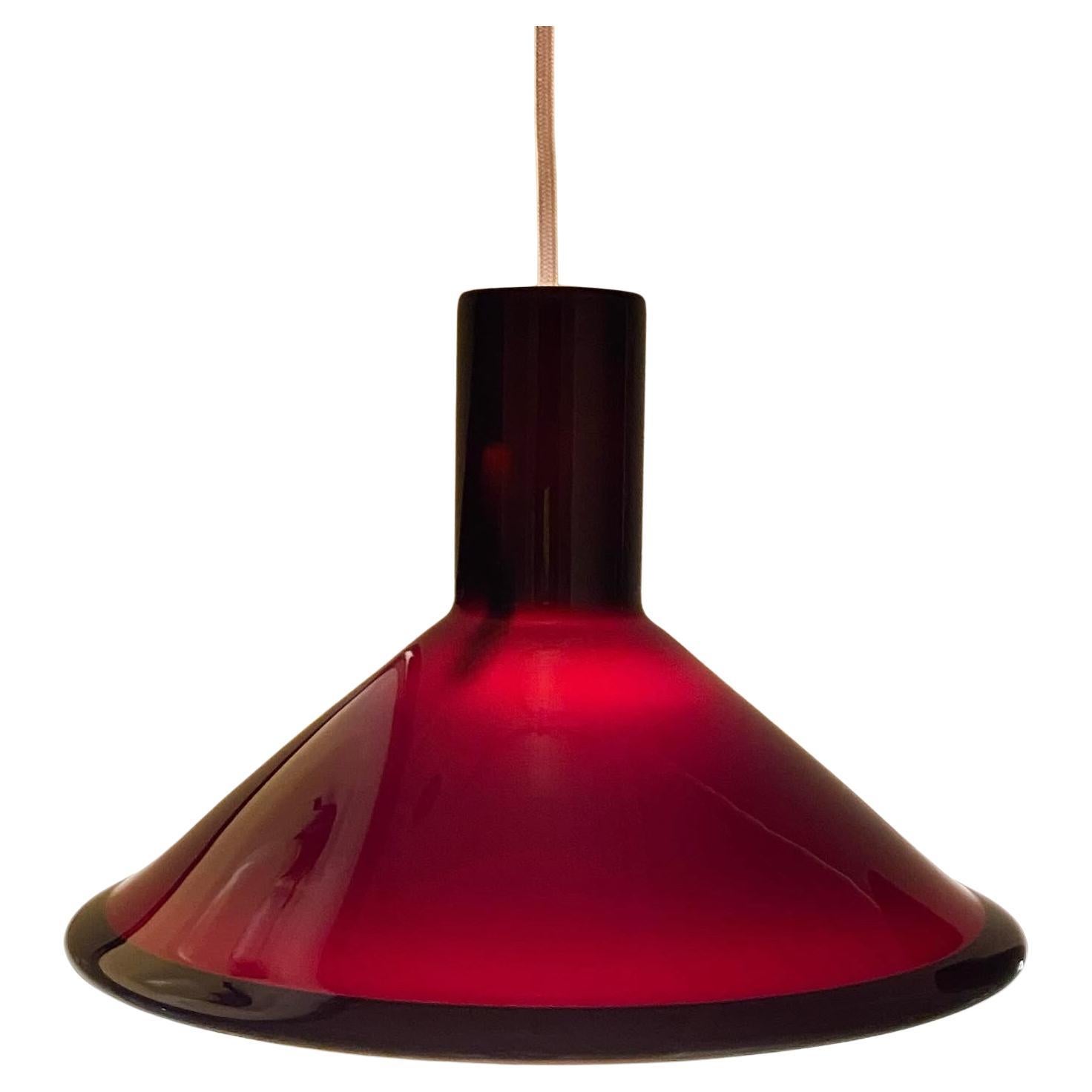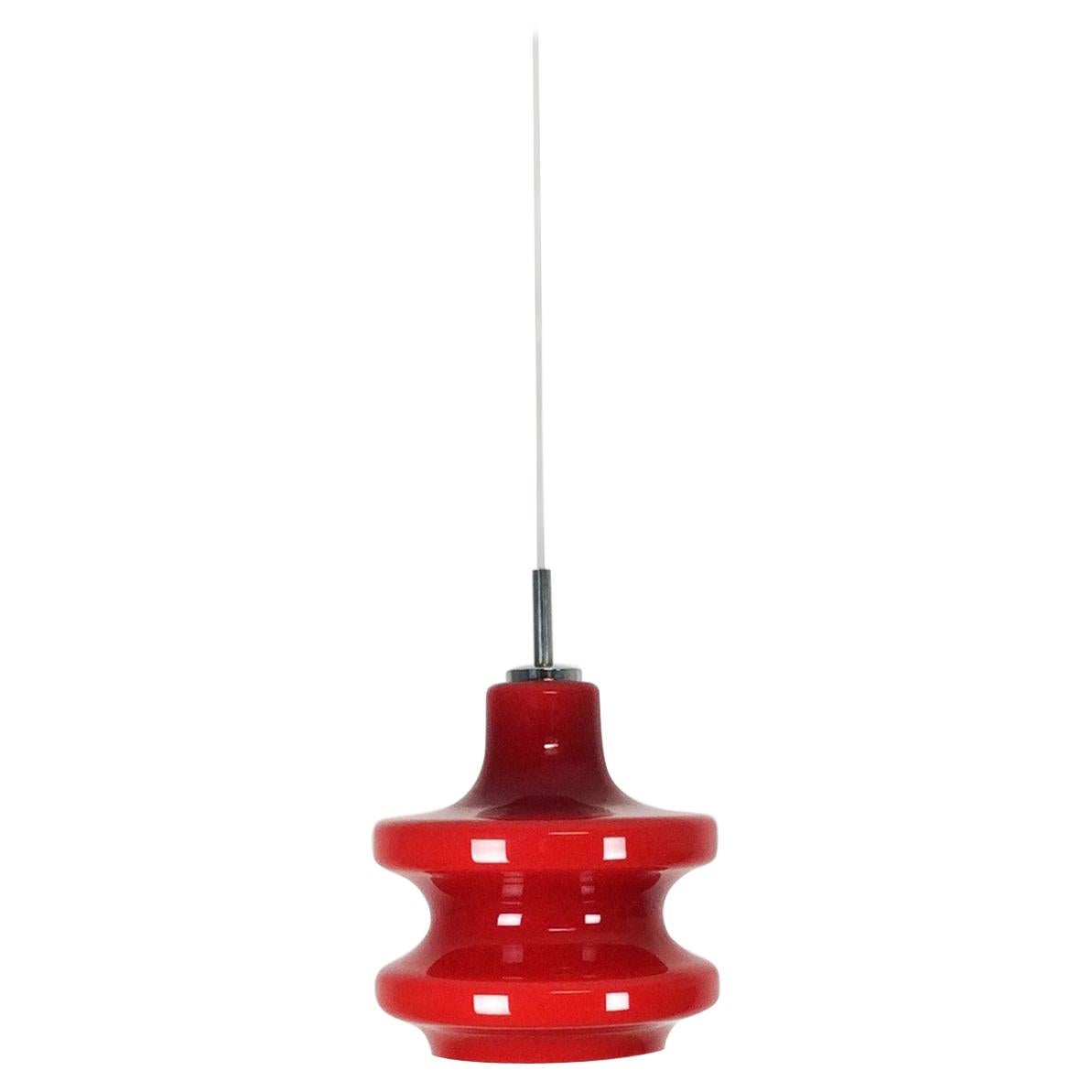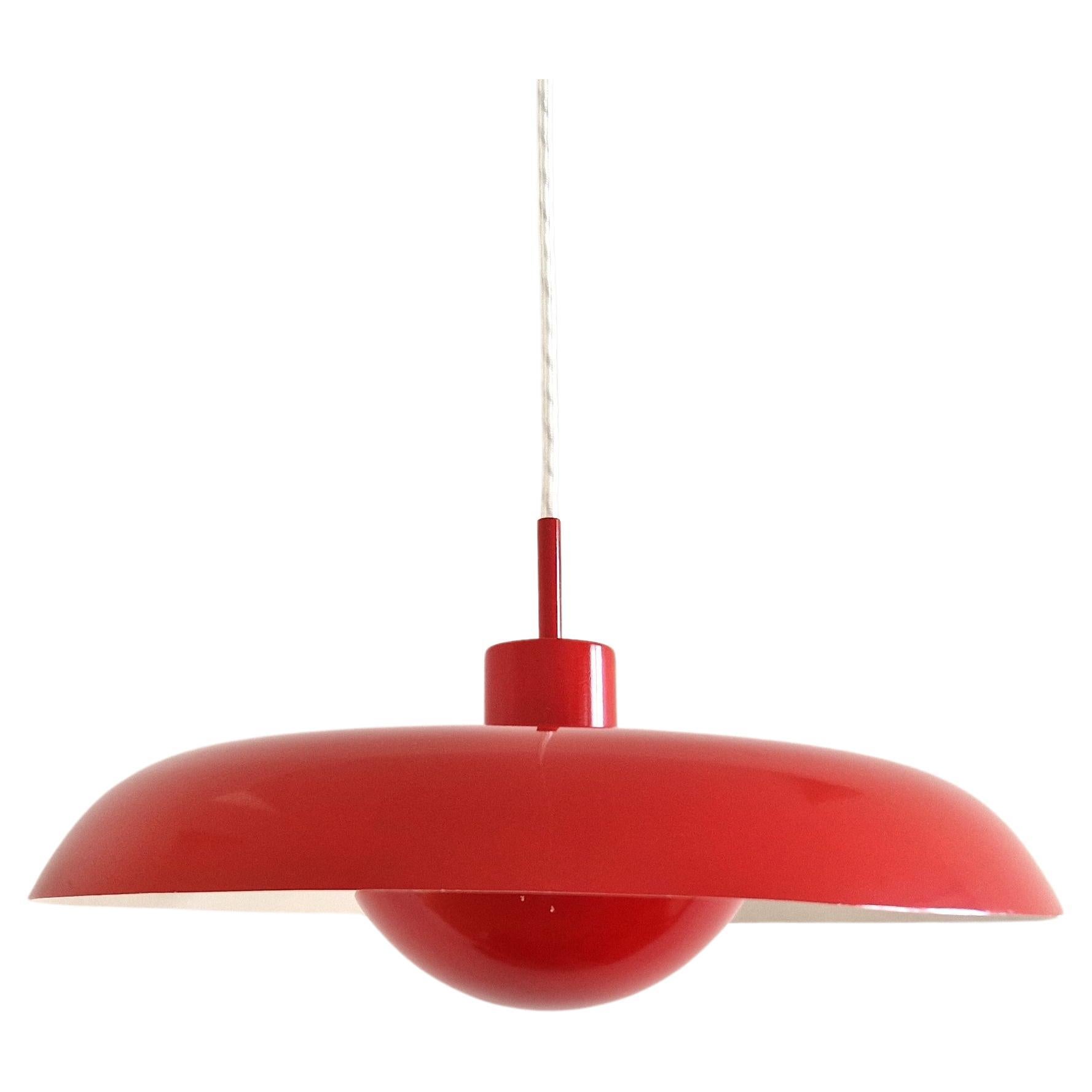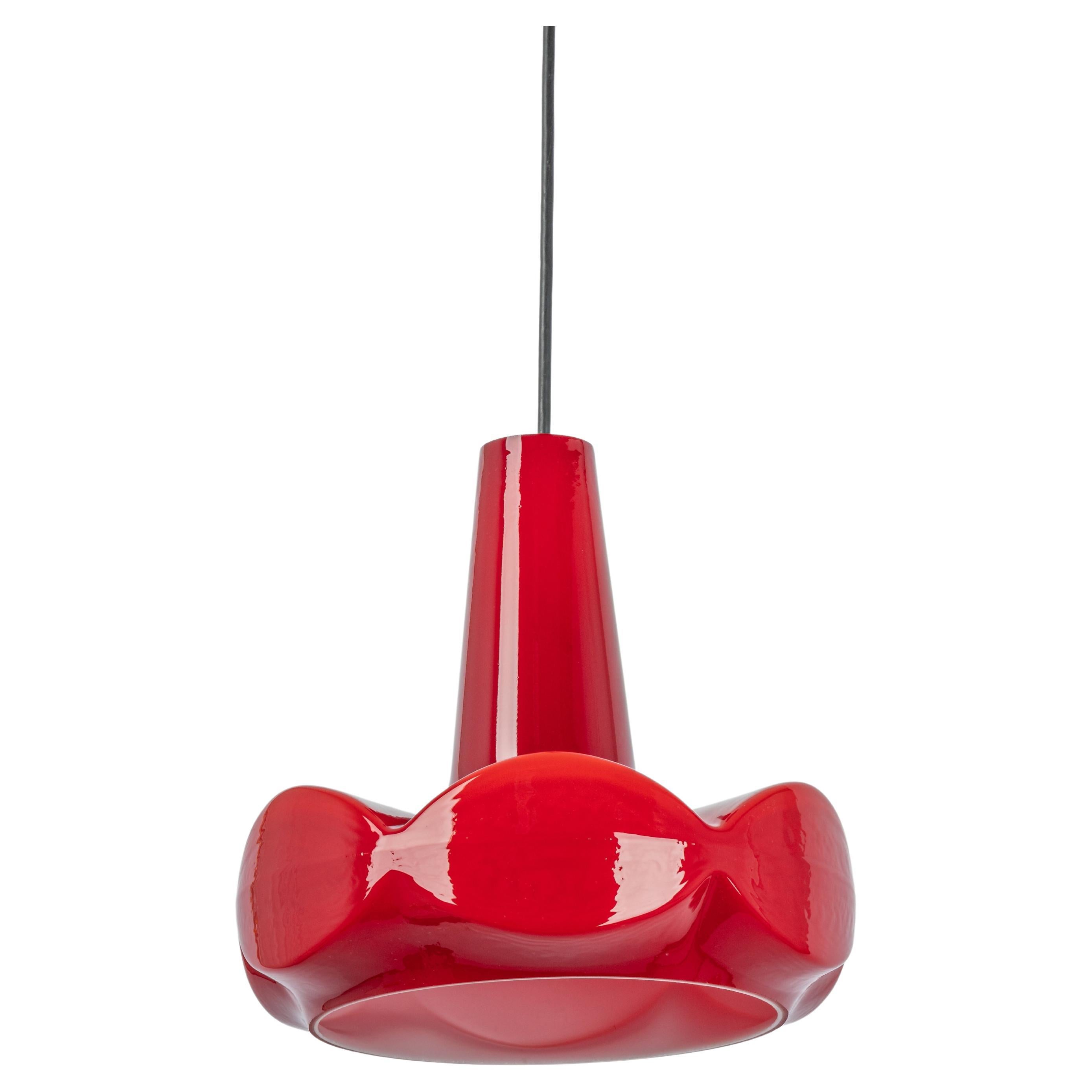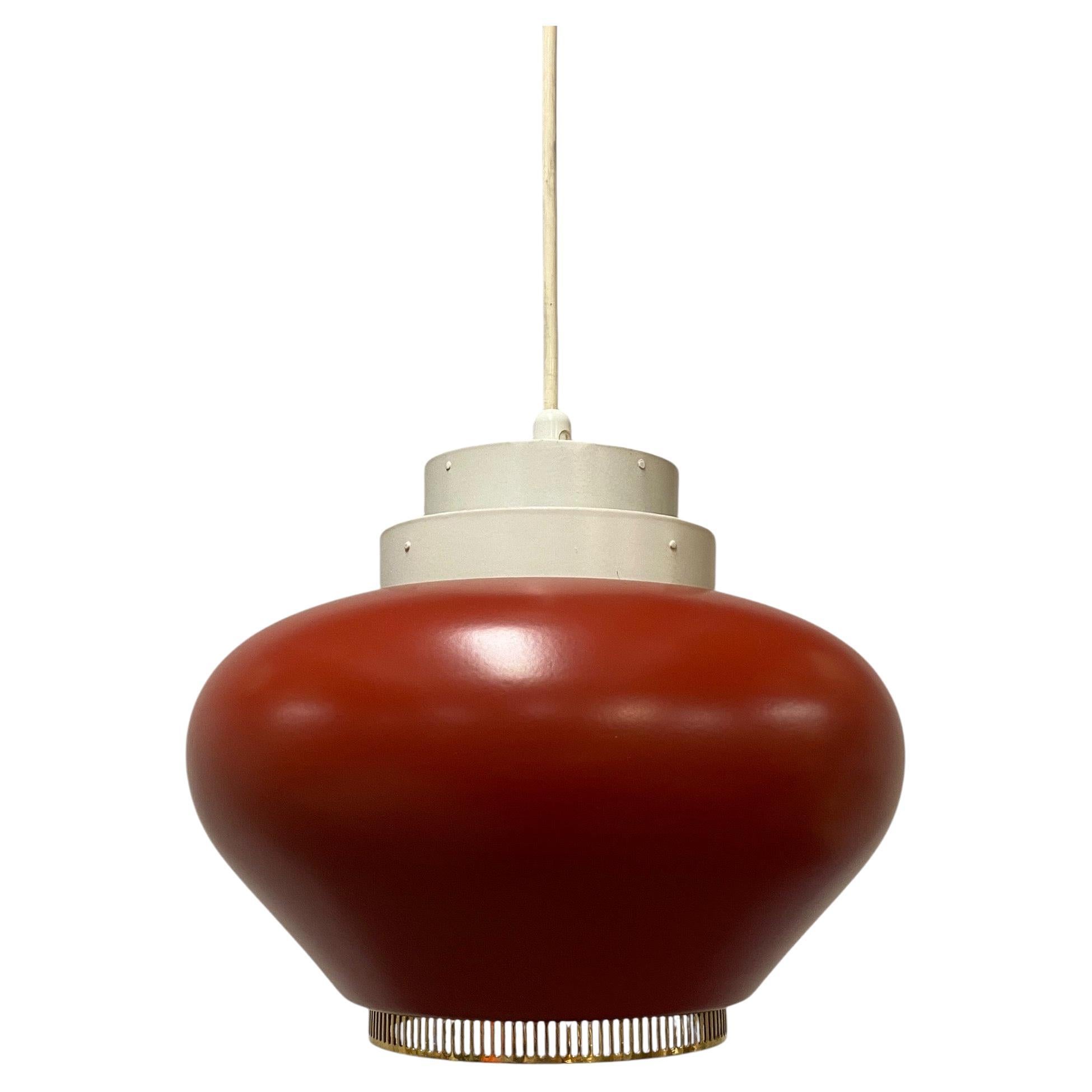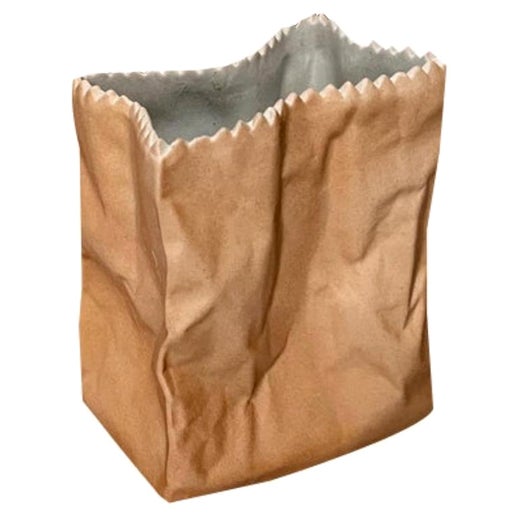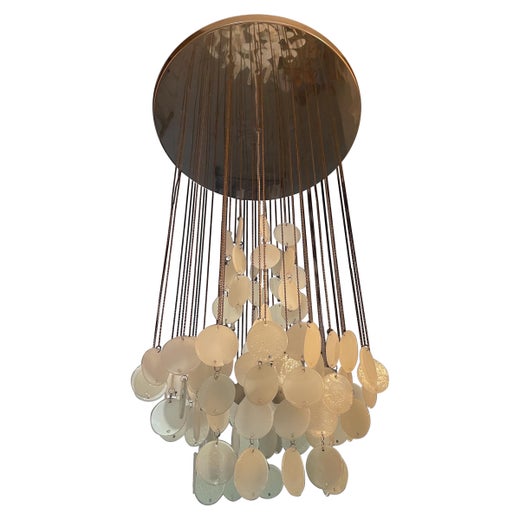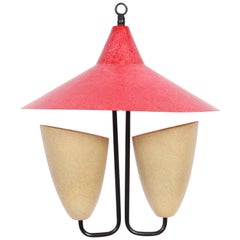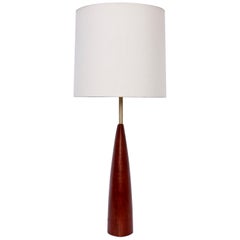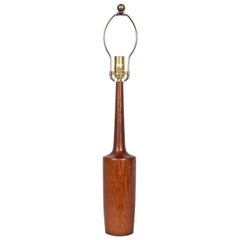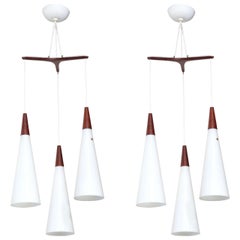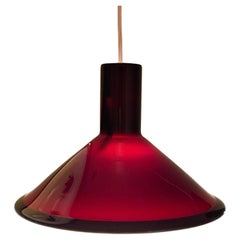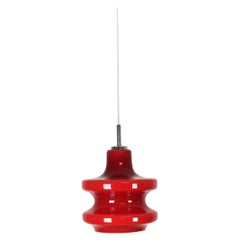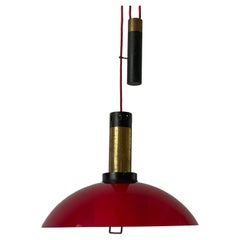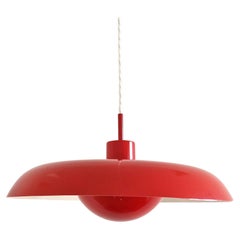Tapio Wirkkala Hanging Teak Lamp with Red Vistosi Glass Shade, 1950s
About the Item
- Creator:Vistosi (Workshop/Studio),Tapio Wirkkala (Designer)
- Dimensions:Height: 19 in (48.26 cm)Diameter: 10 in (25.4 cm)
- Power Source:Hardwired
- Voltage:110-150v
- Lampshade:Included
- Style:Scandinavian Modern (Of the Period)
- Materials and Techniques:
- Place of Origin:
- Period:
- Date of Manufacture:1950s-1960s
- Condition:Wear consistent with age and use.
- Seller Location:Bainbridge, NY
- Reference Number:Seller: 65412914C0SM0102251stDibs: 1312239139683
Tapio Wirkkala
Along with architect Alvar Aalto, the designer Tapio Wirkkala was Finland’s leading contributor to the Scandinavian interpretation of modernism in the mid-20th century. Prolific and innovative, Wirkkala excelled in a wide range of fields, including glass, furniture, porcelain, jewelry and tableware. The hallmark of his talent was an ability to impart a craft aesthetic based on natural forms — leaves, ice, bubbles, birds — to industrially produced designs.
A native of Helsinki, Wirkkala studied at the national School of Applied Arts and took up a career in graphic design. After serving in the Finnish army during World War II, he joined the glassmaking firm Iittala, an association that would continue to the end of his life. Wirkkala learned every aspect of glassmaking in keeping with his belief that an artist-designer should be involved in all stages of production. His best-known works for Iittala are vases and drinking vessels that resemble either carved ice or icicles. In 1956, Wirkkala began a long relationship with the porcelain maker Rosenthal, for whom he designed elegant table pieces, such as the Finlandia coffee service and the biomorphic Pollo vases.
House Beautiful magazine declared Wirkkala’s Leaf platter the “most beautiful object” of 1951. (The acclaim led to his brief employment stint with industrial designer Raymond Loewy in New York.) That platter was one of the first designs Wirkkala made using laminated sheets of plywood sanded to a smooth surface that resembles an abstract leaf. It would go on to become a motif in many Wirkkala furniture pieces — most notably in inlaid coffee tables for Asko — and in a sense these are the works most emblematic of his personal aesthetic.
Wirkkala was a traditionalist in many ways, but he had a modernist’s practical approach, incorporating his leaf-like spirals into simple, functional objects. That is the core attraction of Wirkkala’s designs: They stand out with a striking, sculptural energy yet blend in as part of a warm and comfortable decor.
Find vintage Tapio Wirkkala furniture on 1stDibs.
Vistosi
Demonstrative of a unique marriage between artistry and technical excellence, Vistosi lighting fixtures were born from a rich Italian glassmaking tradition. The prolific glass manufacturer came to prominence after World War II for its modernist lighting designs, and today Vistosi is known for opulent chandeliers, lamps and sconces.
The history of Vistosi reaches as far back as 1640, when the Gazzabin family of Murano opened a furnace for producing Murano glass art. "Vistoso," which was originally a nickname, became part of the family's surname and eventually the name “Vistosi” was used to refer to the family’s glass creations.
Vistosi would be recognized by the glassmakers’ guild in Murano during the late 18th century — with Gio-Batta Vistosi becoming head of the guild — but Napoleon dissolved the Venetian state and closed the region’s glass factories by 1807. The modern iteration of the Vistosi company was founded in Murano in 1945 by Guglielmo Vistosi, a Gazzabin family heir.
During the 1950s, Vistosi's grandchildren, Gino and Luciano Vistosi, began specializing in lighting. In the 1960s and ‘70s, the company worked with renowned Italian furniture designers like Adalberto Dal Lago, Ettore Sottsass and Gae Aulenti. One of Vistosi's most famous collaborations was with Italian architect and designer Angelo Mangiarotti. In 1967, Mangiarotti designed a modular crystal-hook lighting system called Giogali that has enjoyed popularity and acclaim to this day.
In 1989, Vistosi was taken over by businessman Giancarlo Moretti, who had an extensive background in the lighting industry. Moretti's son, Matteo Moretti, reinvigorated the business with a series of new design collaborations in 1993. Some of the most notable partnerships included Chiaramonte and Marin, Mauro Olivieri and Michele De Lucchi.
Vistosi has participated in every Euroluce showcase since the lighting exhibition began in 1976. In 2005, the company won the ADI Design Index award for Mangiarotti's Giogali system. In 2007, Vistosi won the Eurispes award and participated in a Compasso d'Oro competition.
Today, Vistosi is still a leader in the lighting industry, shifting to LED and creating new types of lead-free crystal glass for its stunning range of lighting fixtures.
Find a collection of vintage Vistosi lighting and decorative objects on 1stDibs.
- ShippingRetrieving quote...Shipping from: Bainbridge, NY
- Return Policy
More From This Seller
View AllVintage 1950s American Mid-Century Modern Chandeliers and Pendants
Brass
Mid-20th Century Danish Scandinavian Modern Table Lamps
Brass
Mid-20th Century Danish Scandinavian Modern Table Lamps
Brass
Vintage 1950s Danish Scandinavian Modern Chandeliers and Pendants
Milk Glass, Teak, Glass
Vintage 1970s German Modern Chandeliers and Pendants
Chrome, Metal
Vintage 1960s Swedish Mid-Century Modern Chandeliers and Pendants
Metal
You May Also Like
Vintage 1970s Danish Scandinavian Modern Chandeliers and Pendants
Glass
Late 20th Century German Mid-Century Modern Chandeliers and Pendants
Metal
Vintage 1960s Italian Mid-Century Modern Chandeliers and Pendants
Metal, Brass
Vintage 1960s Danish Mid-Century Modern Chandeliers and Pendants
Metal
Vintage 1970s German Mid-Century Modern Chandeliers and Pendants
Glass
Vintage 1950s Finnish Mid-Century Modern Chandeliers and Pendants
Metal, Brass
